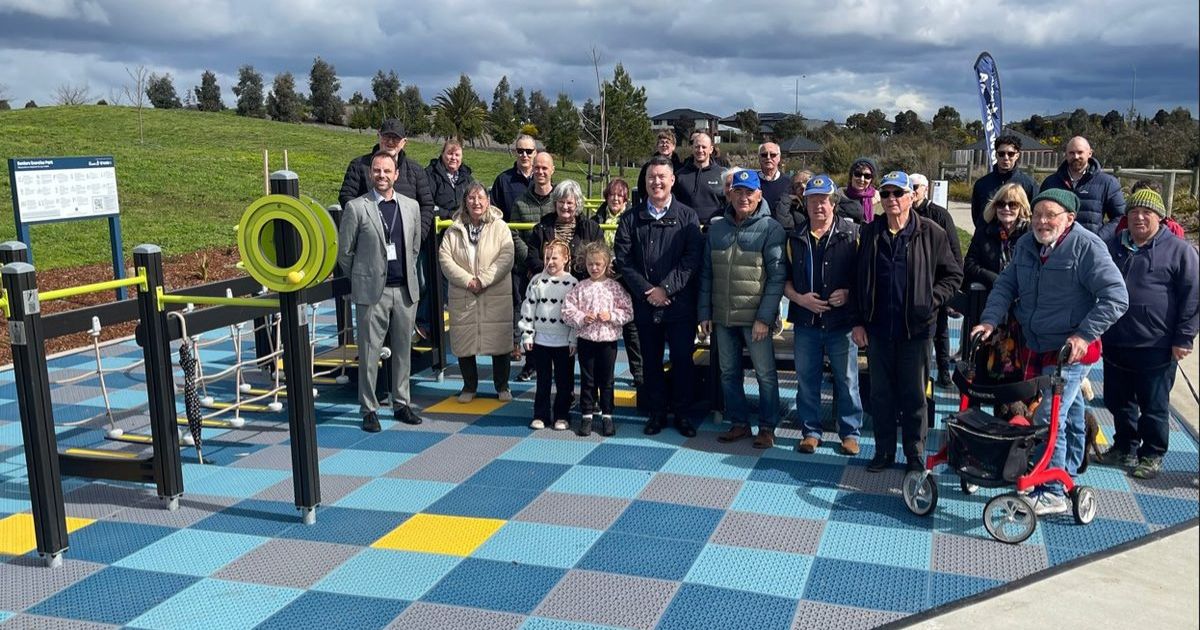Council takes position on power line

Strong sign: many placards have been placed along proposed routes for the Western Victoria Transmission Network Project in opposition to the plan. Photo: ALISTAIR FINLAY
NEARLY a year after the plans were first announced, City of Ballarat council has decided on an official position regarding the Western Victoria Transmission Network Project.
At the Wednesday, 26 May regular meeting, councillors moved to feedback to into the project’s environmental effects statement process and push for an underground solution for the plan.
Cr Mark Harris said the actions of the project’s key backer, AusNet Services, were “appalling” and council needed to hold the involved entities to account.
“When you look at AusNet and its approach, it really defies even the most basic consultation dynamics and genuinely talking to communities and trying to get the best outcomes,” he said.
“You think of the agricultural land that we’re losing and what it’s doing to those communities, I think we’ve got to sheet home the blame sensibly… to governments and the authorities that are doing this and trampling on people.”
Announced in late June last year, the 190-kilometre-long Western Victoria Transmission Network Project is set to run from Bulgana north-east of Ararat to Sydenham in Melbourne’s west as a way of getting electricity from the region’s growing number of windfarms to the national grid.
The project would see a 220-kilovolt line from Bulgana connect with a substation somewhere north of Ballarat before becoming a 500-kilovolt double circuit line for the 75-kilometre stretch to Sydenham.
Mayor Cr Daniel Molony said while council supports a renewable energy network, the project’s builders could’ve addressed the public’s concerns sooner.
“[We need to] take this motion as our starting point and I believe we need to quickly… figure out to what degree we’ll fund and resource our advocacy,” he said.
Ultimately, council agreed to advocate the project’s environment effects statement to “properly consider and use underground methods of power transmission wherever possible”, and for the route “to use existing road, rail and electricity easements wherever” it can.
Originally the plan identified a wide swath of land the power line could take, stretching from the north of the Ballarat local government area in places like Invermay and Miners Rest, up to Smeaton in Hepburn Shire.
In late February this year, the potential path for the power line was in part narrowed to two main routes with crossovers.
One option would see the line enter the Ballarat municipal area at Waubra before running north of Learmonth and then heading north-east to connect to a pathway through Allendale and Kingston, before heading south at Balmpid.
For there it would run through Newlyn and Dean and eventually head deeper into Moorabool Shire, where that council has been advocating for an underground option since August 2020.
During the recent City of Ballarat council meeting, potentially affected farmers said a “completely backwards” economic cost-benefit test conducted by the Australian Energy Market Operator in 2017 didn’t take into account the costs the project would have on the community.
Chairman of the Ballarat Potato Growers’ Group Chris Stephens said the proposed transmission corridors for the project would mean the end of the region’s thriving farms.
“Restrictions around the transmission line will include no irrigation,” he said.
“With no irrigation, there’s no potatoes. And potatoes are not the only industry that farmers in this area use irrigation for.
“If a transmission line with an easement runs through a paddock and the most efficient and modern technology is large irrigators… that span hundreds of metres long, well it pretty much prevents them from covering the whole paddock and so then that takes that paddock out of production.”
With the district’s seed and commercial potato production estimated to have a farm gate value of around $50 million, Mr Stephens said the proposed power line project, “Makes it very hard to be efficient and compete.”


















